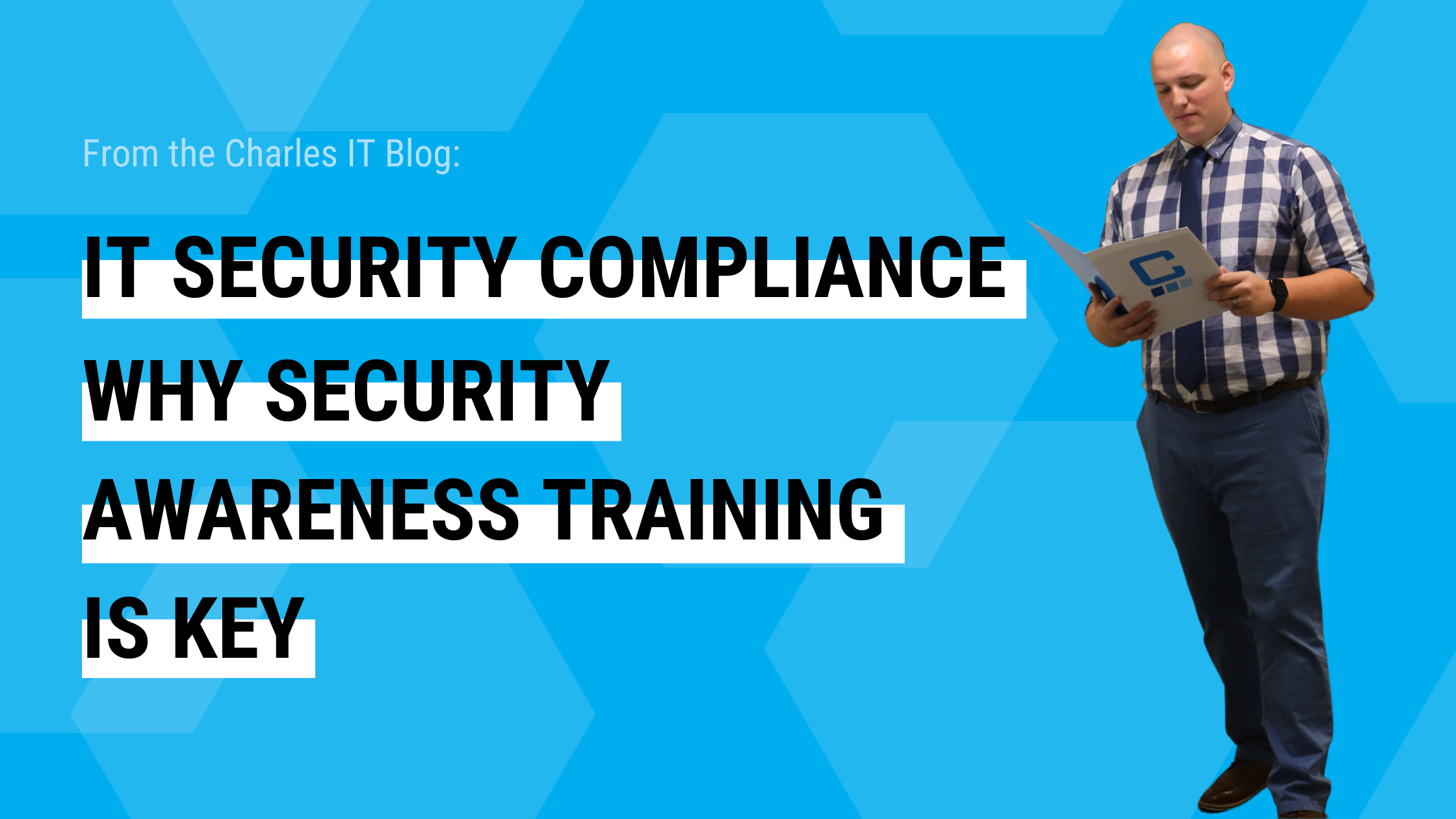
Not all employees are aware that they possibly pose a security threat to the company. Some of them may not even be familiar with phishing and other common scams and may not understand their responsibilities toward protecting company data.
Unfortunately, even with top-of-the-line cybersecurity systems, your company won’t be completely safe from cyberattacks unless your workforce is properly trained to identify and handle them. This is why regularly conducting an effective cybersecurity awareness training program is important. In terms of regulated industries, security awareness is essential. Let's dig in to four of the most common compliance frameworks and how security awareness fits in.
won’t be completely safe from cyberattacks unless your workforce is properly trained to identify and handle them. This is why regularly conducting an effective cybersecurity awareness training program is important. In terms of regulated industries, security awareness is essential. Let's dig in to four of the most common compliance frameworks and how security awareness fits in.
Cybersecurity Maturity Model Certification (CMMC) Compliance
CMMC compliance is a standard specific to companies who hold Department of Defense (DoD) government contracts. CMMC specifies that organizations must provide security awareness training to all employees who have access to DoD information systems. The training must be tailored to the specific roles and responsibilities of the employees, and it must be updated on a regular basis to reflect new threats and vulnerabilities.
IT security awareness training is important for CMMC regulated companies because it helps to protect the sensitive data that they handle on behalf of the DoD. By training employees on the latest cybersecurity threats and best practices, companies can help to prevent data breaches and other security incidents.
Payment Card Industry Data Security Standard (PCI DSS) Compliance
Security awareness training is a critical component of PCI DSS compliance. Requirement 12.6 of PCI DSS mandates that all organizations implement a formal security awareness program to make all personnel aware of the importance of cardholder data security. This applies to organizations of all sizes, regardless of whether they process credit cards directly or indirectly.
Requirement 12.6 of PCI DSS mandates that all organizations implement a formal security awareness program to make all personnel aware of the importance of cardholder data security. This applies to organizations of all sizes, regardless of whether they process credit cards directly or indirectly.
Health Insurance Portability and Accountability Act (HIPAA) Compliance
The HIPAA Security Rule requires covered entities and business associates to provide security awareness training to all workforce members. This training must be tailored to the specific roles and responsibilities of the employees, and it must be updated on a regular basis to reflect new threats and vulnerabilities.
The HIPAA Security Rule specifies that organizations must meet the following requirements for security awareness training:
- 164.308(a)(5) – Training: Covered entities and business associates must provide appropriate training to their workforce members with respect to the security of PHI. The training must be conducted at least annually, and more often if necessary. The training must be tailored to the specific roles and responsibilities of the workforce members.
- 164.308(a)(6) – Sanctions: Covered entities and business associates must take reasonable steps to ensure that their workforce members understand the importance of confidentiality and compliance with HIPAA, and that they are aware of the sanctions that may be imposed for violations of HIPAA.
System and Organization Controls (SOC 2) Compliance
SOC 2 is a voluntary compliance framework that is highly recommended for service organizations.
Service providers that transmit personally identifiable customer data in the cloud — specifically, organizations that must create a SOC type 2 report — should have an effective cybersecurity awareness training program. SOC 2 compliance is aimed at assuring customers, management, and other stakeholders that a business’s security, availability, processing integrity, confidentiality, and/or privacy controls are effective. Companies that need to pass a SOC 2 audit should, therefore, foster a strong cybersecurity culture and ensure that security policies are strictly adhered to.
|
Related article: What Is SOC 2 Compliance And Why Is It Important For Your Business? |
The SOC 2 framework specifies that organizations must meet the following requirements for security awareness training:
- CC 2.2 – Communicate information to improve security knowledge and awareness and to model appropriate security behaviors to personnel through a security awareness training program: Organizations must communicate information to their employees to improve their security knowledge and awareness. This information must be tailored to the specific roles and responsibilities of the employees. The organization must also model appropriate security behaviors to their employees.
- CC 2.3 – Assess the effectiveness of the security awareness training program: Organizations must assess the effectiveness of their security awareness training program on a regular basis. This assessment should be used to identify areas where the program can be improved.
National Institute of Standards and Technology Cyber Security Framework (NIST CSF)
Security awareness training is one of the baselines of following the NIST CSF. NIST CSF is a universal framework that any business can follow in order to ensure best cybersecurity practices. NIST is regularly updated to reflect the current landscape of cyber threats, and new developments in keeping organizations safe from bad actors.
The CSF provides specific guidance on how to implement security awareness training. This guidance includes:
- Establishing a security awareness program: This includes defining the scope of the program, developing training materials, and identifying the target audience.
- Delivering training: This can be done through a variety of methods, such as in-person presentations, online courses, and videos.
- Evaluating the effectiveness of training: This can be done through surveys, quizzes, and observation.
Security Awareness Training Best Practices
According to the Ponemon Institute, the following components must be considered to assess if your security awareness training is up to par:
considered to assess if your security awareness training is up to par:
- Compliance – Remaining compliant with various regulations and laws is a good indicator that your employees are following security best practices, which, in turn, prevents the organization from committing violations.
- Ability to prevent and contain threats – Being able to immediately detect threats or take action upon being attacked demonstrates that your program is effective. On the other hand, suffering a data breach and letting it go undetected is a sign that it isn’t.
- Uptime – In case of a hacking incident, being able to continue operations without major disruptions or serious threats to critical company data indicates an effective program.
- Insider threat preventability – This concerns an organization’s ability to prevent security incidents that may be carried out through abuse of access rights, theft of materials, and mishandling physical devices, or employee negligence.
- Policy enforcement – This refers to the ability to monitor staff’s capability to follow cybersecurity policies.
- Cost efficiency – Effective cybersecurity awareness training also helps keep organizations’ security costs at a reasonable level. It prevents drastic increases in security costs resulting from breach-related expenses.
Charles IT has been helping small- to medium-sized businesses develop solid cybersecurity strategies that prevent costly breaches. Call our security awareness experts to learn how we can help you!

.png)

